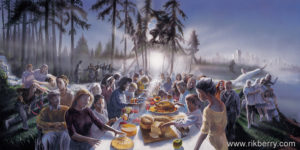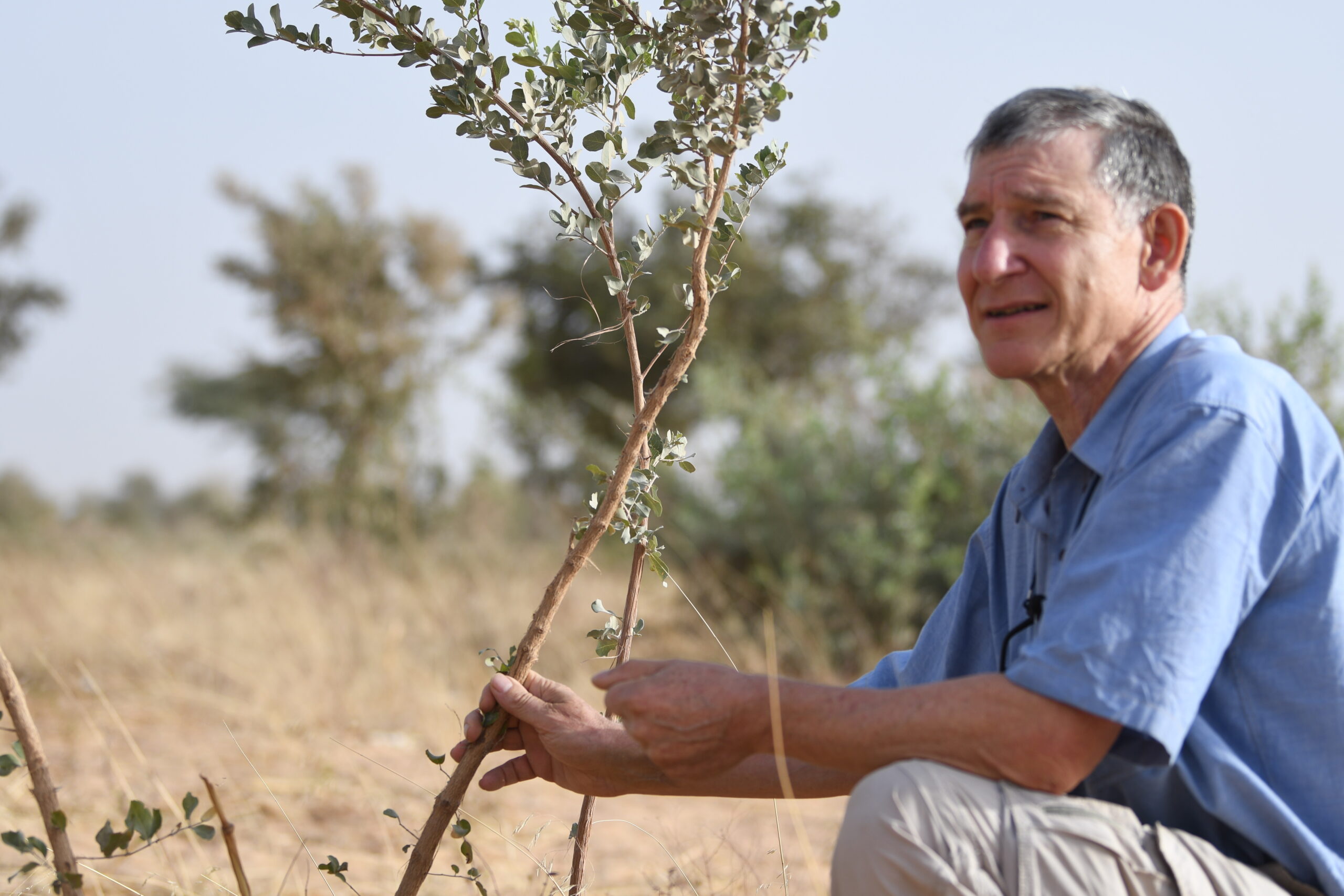Reimagining the end of the story: creation care and the beginning of integral mission
She wakes up. She knows she is ready. Ready for her big day. The sun has never been brighter. The sky has never been bluer. This is the day she’s been waiting for all her life. This is the day she has been working so hard to get everything ready for.
This is the day that everyone gathers around her, for her. This is the day when everything has been made perfect, beautiful and at their full potential to play their parts. The perfect weather. The perfect music. The perfect decor. The most gorgeous flower arrangement the world has ever seen. And the most elegant dress to bring her truest beauty, from inside out. She is finally ready. … She smiles. … She glows with the brightest light from her character, from who she is. The Light from her Father.
This. Is. The. Day.
Everyone celebrates her with their finest gifts out of their most precious possessions. Everyone rejoices this day with her. For her. Everyone is excited. Clapping hands and applause everywhere. The most harmonious symphony plays from all corners with a joyous chorus that no ears have ever heard before. The laughter gets louder. No tears flow from any face. There is no broken heart. No enemy. All are friends. Love and happiness all around. This is the day.
The finest cuisines chosen for the day. Everyone dances around her all day and into the night. But there is no more night falling. The music and dance go on and on and on. The feast never ends. A feast for the whole city. All are welcome. No one goes home hungry, on this day.
What is happening? What is this day? Did you get the picture?
It’s a wedding day. Any married woman remembers her special day. No girl dreams of her wedding to be anything other than this.
The best day in her life. The most precious moment of her time. A day full of happiness, joy and love.
Am I being unreal? Is this only possible in my wildest dreams and imagination? Or in Disney princess movies?
Perhaps this picture of a wedding sounds too good to be true in our broken world today. Some of us have gone through painful times associated with marriage. But one day we will all get to be part of a wedding like this. One day we will celebrate the unique beauty of every place, luscious trees and flowers, every creature from land, sky and sea. One day we will feast with unending bounty. That day all will dance and laugh in never-ending daylight.
This is the wedding feast of the Lamb as we see in Revelation 19 (and onwards). When the bridegroom comes to join his bride, the whole earth will turn into the most beautiful, joyous and exciting wedding party. The bride, the church, will stand next to her Groom, in her most gorgeous dress, made with her good works for the world. Revelation 19:8 describes this: ‘finest linen is the righteous acts of the saints’. What does this mean for integral mission today?
This is the most ‘realistic’ hope for our world, the vision given to Apostle John as we see in the book of Revelation.
Why is it so hard to believe that this is going to happen? That this is going to be the end of this world? The earth isn’t going to burn to ashes and we, the believers, aren’t going to escape to somewhere up in the clouds.
We have a problem, not only in the brokenness of the world, but the biggest problem of all is in our mind – the poverty of our imagination.
We do not see the end of this world as the powerful and beautiful picture revealed to us two millennia ago. Our stories are wrapped in the stories of modernity, and the truncated gospel of other-worldly-eschatology. For the last couple of centuries, we created endeavours of mission as rescuing people from this world as a sinking ship. The gospel became a ticket to the rescue boat heading for a world beyond this earth which will burn up to ashes.
Poverty of imagination.
And yet, the irony is that we do not realize how powerful the wrong vision has been in our personal faith journey, congregational worship, and our global missions. For example, try this exercise at your church next Sunday: find hymns and worship songs that have lyrics about ‘leaving earth as the final destiny of Christians’.
The rescue boat has been the most powerful metaphor for mission over the last couple of centuries. We were all swept along in this story so deeply that we do not see the power of metaphor, the power of image!
To begin with the right kind of ‘end’ for creation care as integral mission, we need to replace our metaphor for how the world is going to end. It is not going to end with a rescue boat. The biblical metaphor is the wedding party! We aren’t going anywhere. Jesus is coming back to earth! He is coming back for the party! Our job, as the bride, is to get ready for his coming, and for the wedding, because he is going to marry the Church, his bride!
When you think of the end of this world as the most beautiful, most bountiful wedding feast, how does it affect your imagination and vision of mission? The broken world will be reconciled, through the blood of the Lamb. The New Creation will be the wedding stage where we all will stand, dance and feast together. It will be the party ground! What does this imply for creation care?

Power of metaphor.
As I said earlier, we must begin with the right ‘end’ in mind. We have to programme ourselves with this image in our head. It’s the wedding feast at the end of it all, not a rescue boat from the troubled sea.
Rik Berry is a Canadian artist who does inspirational and prophetic art. His painting, ‘Come,’ depicts this metaphor beautifully.
As we enter the season of Advent and as we await Jesus’s second coming for his wedding feast, let us remember all of us are invited to this grand feast of God’s love and grace.
Come!

This painting portrays the almost overwhelming call of God as the light of a new day dawning. God beckons people from all nations and circumstances of life to come to the wedding feast of the lamb. The table is spread with bountiful food, each bit symbolic. People are being drawn to the table as if life itself depends upon arriving there. Some dance, some sing, and some are being helped to the table. There is an uncontrolled, spontaneous unity in this gathering. In the distance is the city of the world. The trees and waterfall, from which a river flows, suggest the restoration of the Father as those drawn come apart to be with Him. The menorah represents the perfect abiding presence of God with His people. Over the image are the open arms of Christ welcoming those He has called. His hands are made up of people at the extreme edge of life coming to the centre of His heart. The people make up His body. Above the table His face is seen radiant with light. He overlooks the gathering with joy.
We are happy for our blogs to be used by third parties on condition that the author is cited and A Rocha International, arocha.org, is credited as the original source. We would be grateful if you could let us know if you have used our material, by emailing [email protected].


